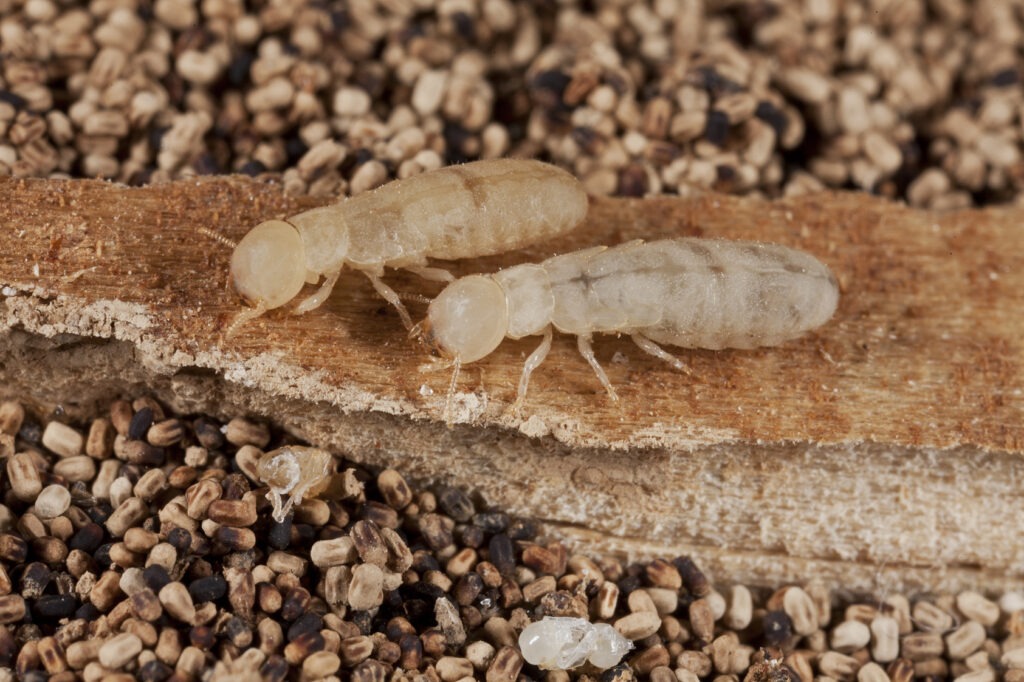
Carolina Termites to Watch Out For
Requests for termite inspections are reaching all-time highs in North and South Carolina. Home and business owners in the Carolinas are becoming increasingly worried about the proliferation of termites invading their properties and causing expensive and, sometimes, irreversible damage.
Termites in the Carolinas: Subterranean and Drywood Termites
The biggest pest problem in North Carolina this fall and winter involves termites, specifically subterranean termites. These termites mostly live underground but can move upward, invading and destroying structures. Subterranean termite colonies typically develop near trees, wood piles, stumps, and other food sources. Queen termites can lay hundreds of thousands of eggs annually, potentially laying millions of eggs in their lifetime.
As the termite colony expands, they must forage for food farther away from the nest to access enough resources for survival. Unfortunately, as their foraging area enlarges, so does the risk of termites infesting your home or business.
South Carolina is busy fending off a double army of subterranean and drywood termites. While these termites are remarkably destructive, an even more destructive termite is also on the loose in SC–the Formosan termite.
It’s never been more critical for Carolinians to get a termite inspection as soon as possible. Nothing is more important than ensuring your home or business isn’t being used for food and building nests by rampaging termites. Call Clark’s Pest today to schedule a termite inspection.
Signs of a Termite Infestation You’ve Probably Missed
Mud Tubes
Termites tunnel through soil or wood or travel inside mud tubes made of dirt and wood particles. Tubes can be found on foundation walls, floor joists, and other building areas. Empty tubes do not mean that termites have left.
Termites often abandon mud tubes and rebuild new ones nearby. Older mud tubes crumble easily, leaving faint marks on the surface where they have deteriorated.
Tubes on ceilings or upper levels may indicate an above-ground infestation, which requires a thorough termite inspection to locate possible moisture problems.
Frass
Frass is the entomological term for termite excrement. It’s a neutral-colored, powdery substance found near exit holes that termites use to come and go from their nests.
Swarmers
Subterranean termites produce winged adults that swarm during the spring and fall. You might mistake swarmers for mosquitos or flying ants because they are about the same size and tend to fly around doors, windows, and sometimes inside a building.
Termite Galleries
Termites create galleries (tunnels) inside wood as they chew their way through a building’s structure. Since termites are most active inside walls and hidden areas, people rarely notice galleries unless they are renovating or repairing their homes or businesses.
Termites in the Carolinas Require Professional Termite Control
One approach to termite control is the Sentricon Termite baiting system in which bait stations are placed at strategic points around a property. The baits are brought by termites to the nests where they spread to all the termites in a colony, eventually killing it.
Another termite treatment may involve a “trench and treat” method, where products are applied to the soil around specific areas of the house, such as the foundation wall. The soil is trenched and treated to form a continuous chemical barrier, preventing termites from reaching the foundation and piers. This method effectively stops the infestation and protects your home from future termite infestations.
If you suspect that dry wood or subterranean termites have breached your home or business, don’t hesitate to contact Clark’s Pest to schedule a comprehensive termite inspection. Early detection is vital to preventing thousands of dollars of damage associated with a termite infestation. Call Clark’s today!
